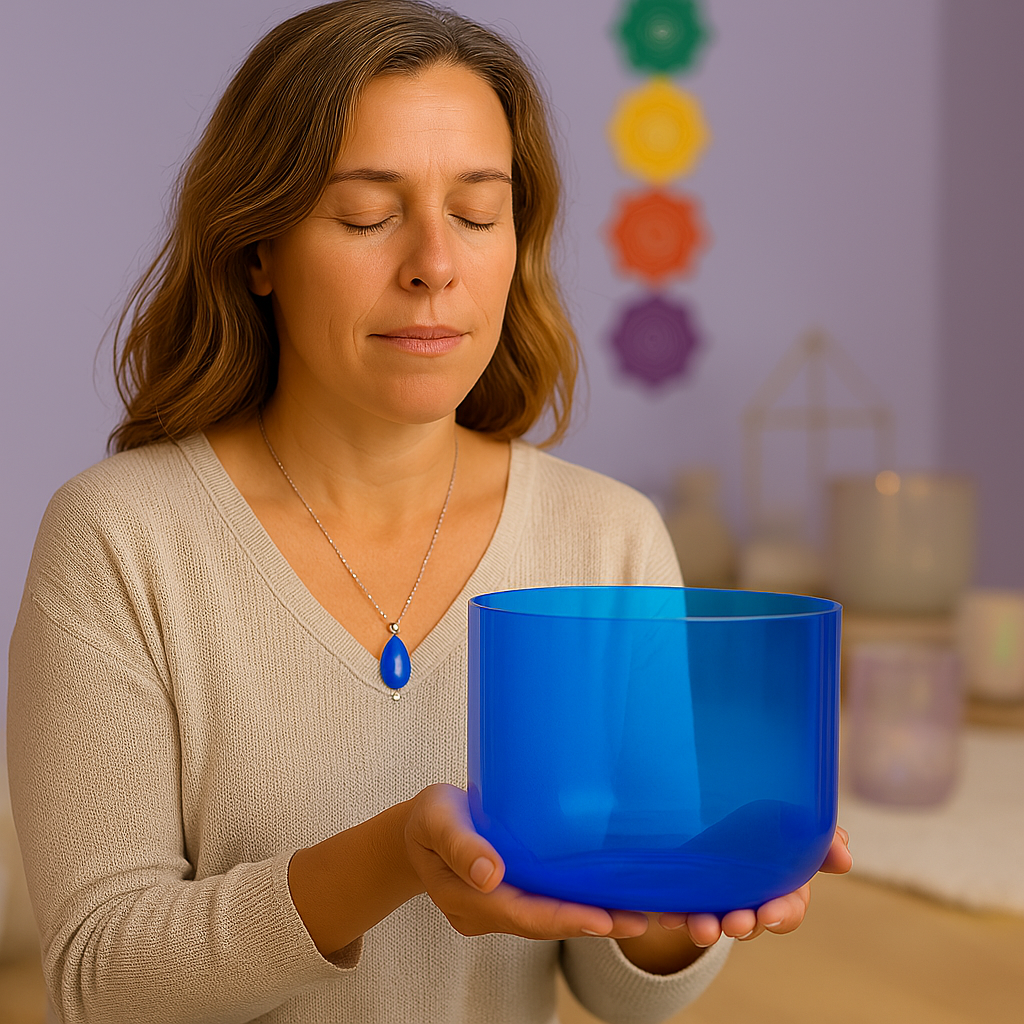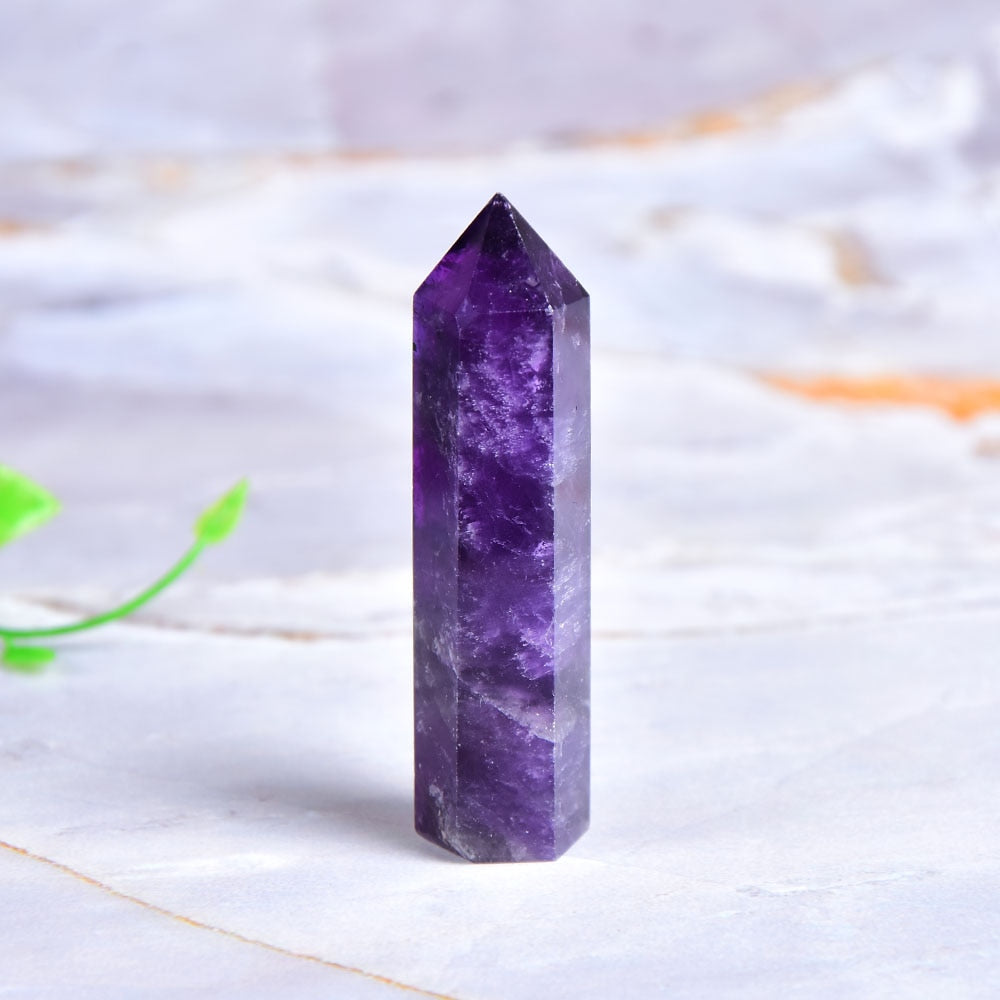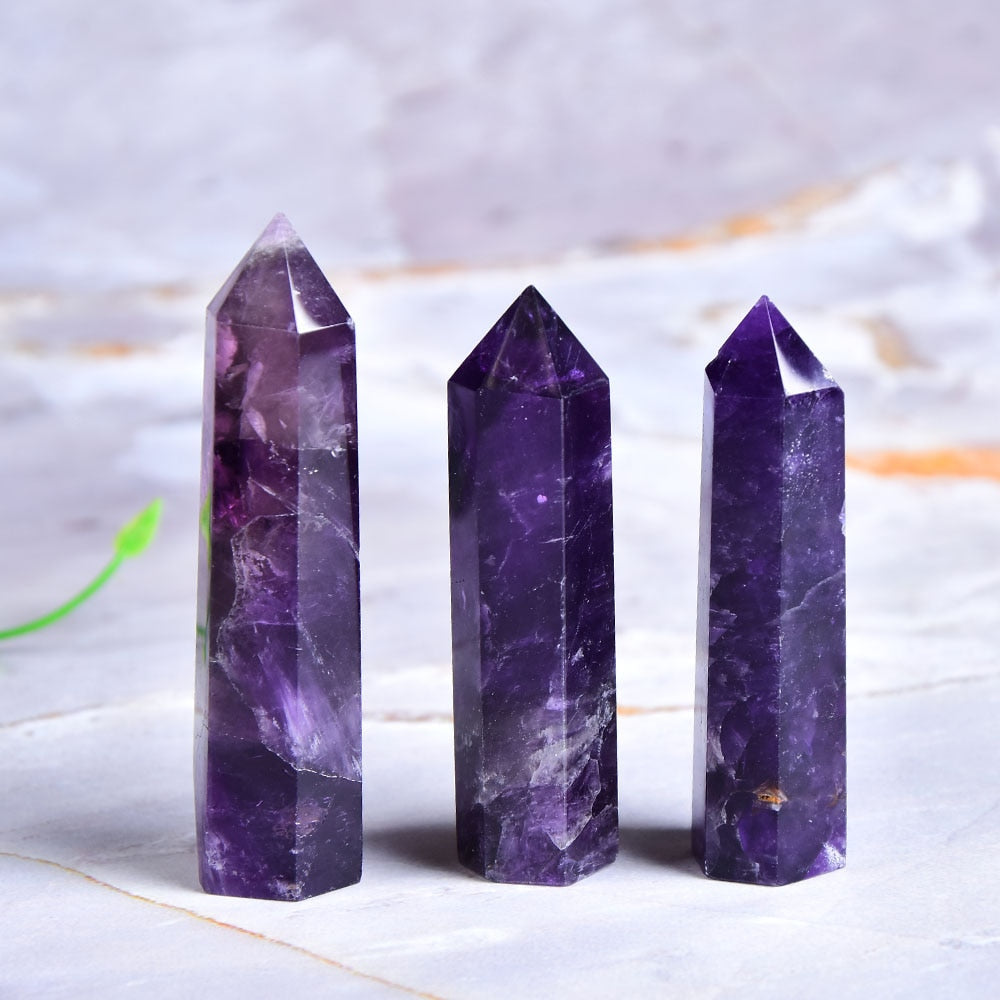Das dritte Auge (Ajna Chakra) verstehen
Das dritte Auge, auf Sanskrit Ajna-Chakra , wird oft als „Sitz der Intuition“ oder „inneres Auge“ bezeichnet. Es befindet sich in der Mitte Ihrer Stirn zwischen Ihren Augenbrauen und ist das sechste Hauptchakra in traditionellen indischen Yoga-Systemen. Dieses Energiezentrum gilt als Drehscheibe innerer Weisheit, Hellsichtigkeit, Vorstellungskraft und spiritueller Einsicht. Wenn Ihr drittes Auge ausgeglichen und geöffnet ist, erfahren Sie möglicherweise eine verbesserte Wahrnehmung , die Fähigkeit, über die physische Welt hinauszublicken, und eine stärkere Verbindung zu Ihrer intuitiven Führung. Es wird mit der Zirbeldrüse in Verbindung gebracht, einer kleinen endokrinen Drüse im Gehirn, die den Schlafrhythmus reguliert und von Mystikern mit spirituellen Erfahrungen in Verbindung gebracht wird. Ausführlichere Informationen zu Chakren finden Sie in Ressourcen wie dem Chakren-Leitfaden des Yoga Journal .
Die transformativen Vorteile der Meditation des dritten Auges
Regelmäßige Meditation mit dem dritten Auge bietet zahlreiche Vorteile, die über das spirituelle Erwachen hinausgehen. Praktizierende berichten oft von einer deutlichen Verbesserung ihres mentalen und emotionalen Wohlbefindens. Einer der wichtigsten Vorteile der Meditation mit dem dritten Auge ist eine gesteigerte Intuition, die es Ihnen ermöglicht, Entscheidungen mit größerer Sicherheit und Klarheit zu treffen. Sie können auch Folgendes erleben:
- Erhöhtes Selbstbewusstsein: Gewinnen Sie tiefere Einblicke in Ihre Gedanken, Emotionen und Lebensmuster.
- Verbesserte Fokussierung und Konzentration: Schärfung Ihrer geistigen Schärfe und Ihrer Fähigkeit, präsent zu bleiben. * Weniger Stress und Angst: Förderung eines Gefühls von innerem Frieden und Ruhe.
- Verbesserte Kreativität und Vorstellungskraft: Neue Ideen und Perspektiven erschließen.
- Stärkere spirituelle Verbindung: Sie fühlen sich stärker im Einklang mit dem Universum und Ihrem spirituellen Weg.
- Besserer Schlaf: Da das Ajna-Chakra mit der Zirbeldrüse verbunden ist, die Melatonin produziert.
Diese positiven Effekte tragen zu einem allgemeinen Gefühl von Ausgeglichenheit und Harmonie bei und ermöglichen es Ihnen, mit mehr Weisheit und Einsicht durchs Leben zu gehen. Wissenschaftliche Studien zur Meditation, wie sie beispielsweise vom National Center for Complementary and Integrative Health (NCCIH) durchgeführt werden, weisen häufig auf Stressabbau und eine verbesserte Emotionsregulation als häufige Ergebnisse hin.
Grundlegende Meditationstechniken für das dritte Auge
Das Erwachen Ihres dritten Auges ist ein schrittweiser Prozess, der Geduld, Beständigkeit und die richtigen Techniken erfordert. Hier sind einige grundlegende Meditationstechniken für das dritte Auge , die Sie in Ihre Praxis integrieren können:
Meditation der fokussierten Aufmerksamkeit
Dies ist eine der direktesten Meditationstechniken für das dritte Auge für Anfänger .
- Setzen Sie sich bequem mit gerader Wirbelsäule auf ein Kissen oder einen Stuhl. Schließen Sie sanft die Augen.
- Konzentrieren Sie sich auf Ihren Atem. Achten Sie auf das Gefühl, wie die Luft durch Ihre Nasenlöcher ein- und ausströmt.
- Wenn Sie sich wohl fühlen, richten Sie Ihren Fokus auf den Punkt zwischen Ihren Augenbrauen – die Stelle Ihres dritten Auges.
- Konzentrieren Sie sich sanft auf diese Stelle. Stellen Sie sich vor, dort leuchtet ein sanftes, indigoblaues Licht.
- Wenn Ihre Gedanken abschweifen, lenken Sie Ihre Aufmerksamkeit sanft wieder auf Ihr drittes Auge. Beginnen Sie mit 5–10 Minuten und steigern Sie die Dauer schrittweise.
Visualisierung zur Ajna-Aktivierung
Visualisierung ist ein wirkungsvolles Hilfsmittel bei der Meditation des dritten Auges .
- Beginnen Sie wie bei einer Meditation mit fokussierter Aufmerksamkeit.
- Sobald Sie zentriert sind, visualisieren Sie eine Kugel aus tiefem Indigo- oder Violettlicht im Zentrum Ihres dritten Auges.
- Stellen Sie sich vor, wie sich dieses Licht mit jedem Atemzug ausdehnt und heller wird und Ihren gesamten Kopf mit seiner heilenden Energie erfüllt.
- Sie können sich an dieser Stelle auch das Öffnen einer Tür oder eines Auges vorstellen, was das Erwachen Ihrer inneren Vision symbolisiert.
- Halten Sie die Visualisierung mehrere Minuten lang und spüren Sie die damit verbundenen Empfindungen.

Mantra-Singen (Bija-Mantra „Om“)
Klangschwingungen können die Chakren kraftvoll stimulieren. Das Bija-Mantra (Samen) für das Ajna-Chakra ist „Om“ (AUM).
- Nehmen Sie eine bequeme Meditationshaltung ein.
- Atmen Sie ein paar Mal tief durch, um Ihre Mitte zu finden.
- Beginnen Sie, das Mantra „Om“ laut oder leise zu singen. Spüren Sie dabei die Schwingung in Ihrem dritten Auge.
- Konzentrieren Sie sich auf den Klang und die Empfindung, die er erzeugt. Machen Sie 5–15 Minuten lang weiter. Meditationsmusik für das dritte Auge mit der „Om“-Frequenz kann ebenfalls hilfreich sein.
Atemarbeit (Pranayama) zum Erwachen des dritten Auges
Spezielle Atemübungen oder Pranayama können helfen, das dritte Auge zu aktivieren, indem sie Energiekanäle reinigen.
- Abwechselnde Nasenatmung (Nadi Shodhana): Diese Übung gleicht die linke und rechte Gehirnhälfte aus und kann helfen, das Ajna-Chakra zu wecken. Dabei wird ein Nasenloch sanft geschlossen, während durch das andere eingeatmet wird. Anschließend wird gewechselt.
- Bienenatmung (Brahmari Pranayama): Ein sanftes Summen wie von einer Biene beim Ausatmen kann Vibrationen erzeugen, die das dritte Auge stimulieren.
Vorbereitung auf Ihre Meditationspraxis für das dritte Auge
Durch die Schaffung der richtigen Umgebung und Einstellung können Sie Ihre Meditationserfahrung mit dem dritten Auge erheblich verbessern.
Einen heiligen Raum schaffen
Suchen Sie sich einen ruhigen, gemütlichen Ort, an dem Sie ungestört sind. Dieser Ort sollte heiter und zur Selbstreflexion anregend sein. Sie können ihn mit Gegenständen, die Ruhe vermitteln, wie Kerzen, Räucherstäbchen, Kristallen oder spirituellen Symbolen, individuell gestalten. Ein sauberer und aufgeräumter Raum trägt auch dazu bei, einen klaren Geisteszustand für die Meditation zu bewahren.
Absichten festlegen
Bevor Sie mit der Meditation beginnen, nehmen Sie sich einen Moment Zeit, um eine klare Absicht zu formulieren. Was möchten Sie durch diese Übung erreichen oder erleben? Es könnte sein, Klarheit über ein bestimmtes Thema zu gewinnen, Ihre Intuition zu stärken oder einfach eine tiefere Verbindung zu sich selbst herzustellen. Eine fokussierte Absicht dient als kraftvoller Leitfaden für Ihre Energie und Aufmerksamkeit während der Meditation.
Alchemy – Klangschale aus klarem Indigo-Kristall „A Note“
$369.00 $469.00
Öffnen Sie Ihr drittes Auge mit den reinen Indigotönen dieser A-Note-Kristallklangschale, perfekt für Meditation und intuitive Klarheit.
Produkt entdeckenTipps für Anfänger in der Meditation des dritten Auges:
- Fangen Sie klein an: Beginnen Sie mit 5- bis 10-minütigen Sitzungen und steigern Sie diese schrittweise, wenn Sie sich wohl fühlen.
- Seien Sie geduldig: Das Erwachen des dritten Auges ist eine Reise, kein Wettlauf. Lassen Sie sich nicht entmutigen, wenn Sie nicht sofort dramatische Veränderungen bemerken.
- Beständigkeit ist der Schlüssel: Regelmäßiges Üben, auch für kurze Zeit, ist effektiver als sporadische lange Sitzungen.
- Hören Sie auf Ihren Körper: Wenn Sie ein Unbehagen verspüren, lassen Sie es langsam angehen. Meditation sollte eine wohltuende Praxis sein.
Was Sie erwartet: Empfindungen und Anzeichen eines sich öffnenden dritten Auges
Wenn Sie regelmäßig die Meditation des dritten Auges praktizieren, bemerken Sie möglicherweise subtile oder deutliche Empfindungen und Anzeichen dafür, dass Ihr Ajna-Chakra aktiver wird. Diese Erfahrungen sind von Person zu Person sehr unterschiedlich.
Zu den häufigen Empfindungen gehören ein Kribbeln oder Pulsieren in der Stirnmitte, ein Gefühl von Wärme oder sanftem Druck oder das Sehen von Lichtern, Farben (insbesondere Indigo oder Violett) oder Mustern mit geschlossenen Augen. Manche Menschen berichten von lebhaften Träumen, gesteigerter Intuition, Momenten plötzlicher Klarheit oder Erkenntnis sowie einem gesteigerten Gefühl von Empathie oder Verbundenheit mit anderen. Denken Sie daran, dass dies nur mögliche Anzeichen sind und die Reise der Öffnung des dritten Auges für jeden einzigartig ist. Es ist wichtig, Erfahrungen nicht zu erzwingen, sondern offen und aufmerksam zu bleiben.

Anzeichen eines aktiven oder sich öffnenden dritten Auges:
- Gesteigerte Intuition: Ein stärkeres inneres Wissen oder Bauchgefühl.
- Erhöhte Klarheit: Geistige Verwirrung lichtet sich und die Gedanken werden klarer.
- Lebhafte Träume: Träume können bedeutungsvoller oder symbolischer werden.
- Auren oder Energie sehen: Wahrnehmung subtiler Energiefelder.
- Verbesserte Empathie: Ein tieferes Verständnis und Gefühl für die Gefühle anderer.
- Druck oder Kribbeln: Empfindungen im Bereich der Stirn.
Geführte Meditationsreise zum dritten Auge (Video)
Für diejenigen, die von Anleitung profitieren, kann eine aufgezeichnete Meditation eine hervorragende Möglichkeit sein , Meditationstechniken für das dritte Auge zu erkunden. Diese geführte Sitzung ist speziell darauf ausgelegt, Sie mit Ihrem Ajna-Chakra zu verbinden und Wahrnehmung, Bewusstsein und spirituelle Kommunikation zu fördern. Lassen Sie sich von der beruhigenden Stimme und der entspannenden Musik auf eine Reise nach innen führen.
Verbessern Sie Ihre Praxis: Tools für tiefere Einblicke
Bestimmte Hilfsmittel können Ihre Meditationspraxis für das dritte Auge vertiefen und eine förderlichere energetische Umgebung für das Erwachen Ihrer inneren Vision schaffen. Kristalle, Edelsteine und Klangheilinstrumente werden häufig zur Unterstützung der Chakrenarbeit eingesetzt.

Wichtige Werkzeuge für Ihre Reise zum dritten Auge
$24.90
$35.90
Tragen Sie dieses elegante Lapislazuli-Armband, um die Meditation des dritten Auges zu unterstützen und täglich die Konzentration, das spirituelle Bewusstsein und die ruhige Einsicht zu verbessern. Mehr erfahren ➔
$29.99
$39.99
Verwenden Sie diesen Amethystturm, um die Aktivierung des dritten Auges zu verstärken und so Frieden, Klarheit und ausgeglichene Energie in Ihre Meditationspraxis zu bringen. Mehr erfahren ➔
Beständigkeit und Dauer: Pflegen Sie Ihre innere Vision
Wie jede Fähigkeit stärkt sich auch die Fähigkeit, auf Ihr drittes Auge zuzugreifen und es zu nutzen, durch beständiges Üben. Es gibt keine magische Zahl dafür , wie lange Sie meditieren sollten, um Ihr drittes Auge zu öffnen , da dies von Person zu Person unterschiedlich ist. Manche bemerken Veränderungen innerhalb von Wochen, während andere Monate oder sogar Jahre engagierten Übens benötigen. Der Schlüssel liegt nicht in der Dauer einer einzelnen Sitzung, sondern in der Regelmäßigkeit und Qualität Ihrer Aufmerksamkeit. Streben Sie nach Möglichkeit tägliche Meditation an, auch wenn es nur 10–15 Minuten sind. Die Häufigkeit der Meditation für das dritte Auge sollte so sein, dass sie sich für Sie nachhaltig und angenehm anfühlt. Mit der Zeit hilft diese beständige Anstrengung, energetische Blockaden zu lösen und Sie für die subtilen Energien des Ajna-Chakras zu sensibilisieren, wodurch Ihre innere Sicht allmählich gefördert wird.
Fazit: Begeben Sie sich auf Ihre Reise zur inneren Sicht
Das Erwecken Ihres dritten Auges durch gezielte Meditation ist eine tiefgreifende Reise zu Selbstfindung, gesteigerter Intuition und spiritueller Erleuchtung. Mit den besprochenen Techniken – wie fokussierter Aufmerksamkeit, Visualisierung, Mantra-Gesang und Atemarbeit – können Sie beginnen, das immense Potenzial Ihres Ajna-Chakras freizusetzen. Denken Sie daran, dass Geduld, Beständigkeit und ein offenes Herz Ihre größten Verbündeten auf diesem Weg sind. Denken Sie beim Erkunden dieser Praktiken daran, wie unterstützende Hilfsmittel wie die Kristallklangschalen und Edelsteine von Healing Sounds eine Umgebung schaffen können, die tiefe Meditation und energetische Ausrichtung fördert. Nehmen Sie die Reise an, vertrauen Sie Ihrer inneren Weisheit und erleben Sie die Entfaltung Ihrer eigenen großartigen inneren Vision.
Häufig gestellte Fragen zur Meditation des dritten Auges
Die Meditation des dritten Auges ist eine Praxis, die sich auf das Erwecken und Aktivieren des Ajna-Chakras konzentriert, dem Energiezentrum zwischen den Augenbrauen, das als Sitz der Intuition, Einsicht und des spirituellen Bewusstseins gilt. Sie umfasst Techniken wie fokussierte Aufmerksamkeit, Visualisierung und Mantra-Gesang, um dieses Zentrum zu stimulieren und die innere Sicht zu verbessern.
Wenn sich Ihr drittes Auge öffnet oder aktiver wird, können Sie verschiedene Empfindungen verspüren, wie z. B. ein Kribbeln oder Druck zwischen den Augenbrauen, das Sehen von Farben oder Lichtmustern mit geschlossenen Augen, eine gesteigerte Intuition, lebhafte Träume, eine verbesserte Klarheit des Denkens und ein tieferes Gefühl der Verbundenheit oder des Wissens. Die Erfahrungen sind sehr individuell.
Es gibt keinen festen Zeitrahmen für die Öffnung des dritten Auges durch Meditation, da dieser von Person zu Person stark variiert, abhängig von ihrer Regelmäßigkeit, ihren bisherigen Erfahrungen und ihrem energetischen Zustand. Manche bemerken Veränderungen bereits nach Wochen, während es bei anderen Monate oder länger dauern kann. Konzentrieren Sie sich auf regelmäßiges Üben und nicht auf eine bestimmte Dauer, um Ergebnisse zu erzielen.
Für optimale Ergebnisse wird häufig tägliche Meditation zur Aktivierung des dritten Auges empfohlen. Schon 10–20 Minuten konzentrierte Meditation pro Tag können effektiver sein als längere, seltene Sitzungen. Beständigkeit ist der Schlüssel zur sanften und effektiven Stimulation des Ajna-Chakras.
Zu den Vorteilen der Meditation des dritten Auges gehören verbesserte Intuition und Einsicht, verbesserte geistige Klarheit und Konzentration, weniger Stress und Angst, größeres Selbstbewusstsein, gesteigerte Kreativität, eine stärkere spirituelle Verbindung und möglicherweise besserer Schlaf. Sie fördert generell das allgemeine Wohlbefinden und ein tieferes Verständnis von sich selbst und der Welt.







